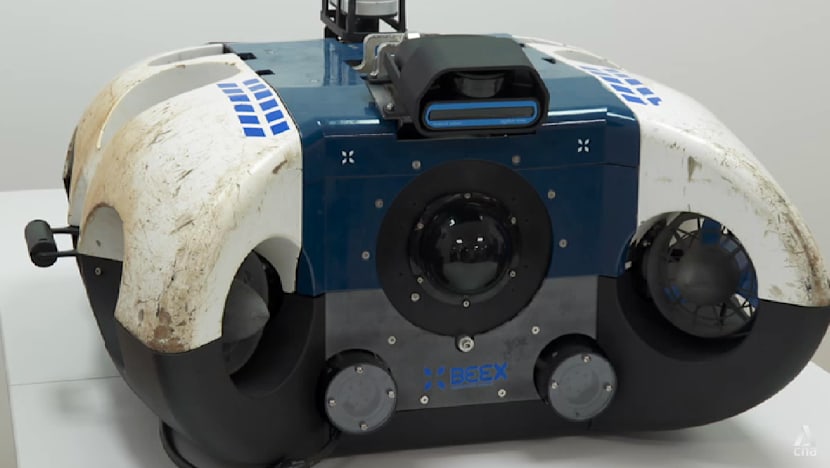Underwater robot to inspect seawalls among 14 projects funded for coastal, flood protection
The projects will receive S$22 million in new grants from national water agency PUB to advance coastal protection and flood management efforts.

A robot that can dive beneath the waves to inspect structures such as pillars and seawalls is among 14 projects awarded grants to bolster Singapore’s defences against rising sea levels.

This audio is generated by an AI tool.
SINGAPORE: A robot that can dive beneath the waves to inspect structures such as pillars and seawalls is among 14 projects awarded grants to bolster Singapore’s defences against rising sea levels.
The autonomous underwater vehicle can reduce the need for manual inspections, which are often labour-intensive, unsafe and restrictive in tight spaces.
Using artificial intelligence, it can also link inspection data to provide a more comprehensive evaluation of vulnerable infrastructure.
STRENGTHENING COASTAL PROTECTION
Together, the 14 projects will receive S$22 million (US$17 million) in new grants from national water agency PUB under the Coastal Protection and Flood Management Research Programme's first applied research grant call.
These projects were highlighted at the Coastal Protection and Flood Resilience Institute (CFI) Singapore annual symposium on Thursday (Sep 18), which drew nearly 300 experts and students.
At the event, Senior Parliamentary Secretary for Sustainability and the Environment Goh Hanyan said climate change is bringing unprecedented challenges.
Rising temperatures are causing sea levels to increase and extreme weather events to intensify, stressed Ms Goh.
Singapore’s mean sea levels is projected to rise by up to 1.15m by 2100, significantly raising the risk of floods.
“As a low-lying and densely-built island nation surrounded entirely by sea, coastal protection is not just important – it is existential to our country,” she added.
“Coastal protection matters because it protects our lives, our livelihoods and our valuable assets.”
In her speech, Ms Goh noted that research and development investments, therefore, “play a critical role” in building Singapore’s capabilities in coastal resilience.
“Looking ahead, I see a Singapore where our coastal protection measures are not just there to defend, but also to enhance our living environment,” she added.
She said adaptive and sustainable coastal infrastructure could also double up as recreational spaces and green areas, complemented by living shorelines that become more resilient over time through Singapore’s native ecosystems and species.
Living shorelines are erosion control methods that use natural materials such as plants or rocks.
FIGHTING CLIMATE CHANGE
The newly-awarded projects will last for about three years, with funding provided throughout the course of the projects.
The team behind the underwater robot, already used globally, will adapt it for Singapore’s waters using the new funding.
“This vehicle is already very advanced, and it's equipped with cameras and sonar, which are the ears and eyes, to observe the structures from a distance,” said Assistant Professor Geng Guoqing from the National University of Singapore’s Department of Civil and Environmental Engineering.
“But in order for us to understand the condition or the further degradation process of (underwater structure) material, this equipment must be able to touch it,” he added.
“That's why we want to add hands and arms to the vehicle, (so that it) is able to measure the infrastructure with close-contact touch.”
Dr Geng, the team's principal investigator, noted that with this automated tool, it will be possible to carry out inspections reliably across different weather and seawater conditions ”to efficiently measure the properties or the health conditions of our infrastructures”.
Meanwhile, there are ongoing projects under CFI Singapore.
One involves filling tubes made out of natural fibres with industrial waste to form barriers that prevent shore erosion, offering a more environmentally friendly alternative to concrete seawalls.
“When sea levels rise, some of the beach areas will be submerged underwater – this will cause greater erosion of the coastal areas,” said Professor Chu Jian, chair of Nanyang Technological University’s School of Civil and Environmental Engineering and principal investigator of the project.
“To prevent coastal erosion, and at the same time to allow the beach to elevate a little bit, we can put a barrier in to allow soil to accumulate,” he added.


















